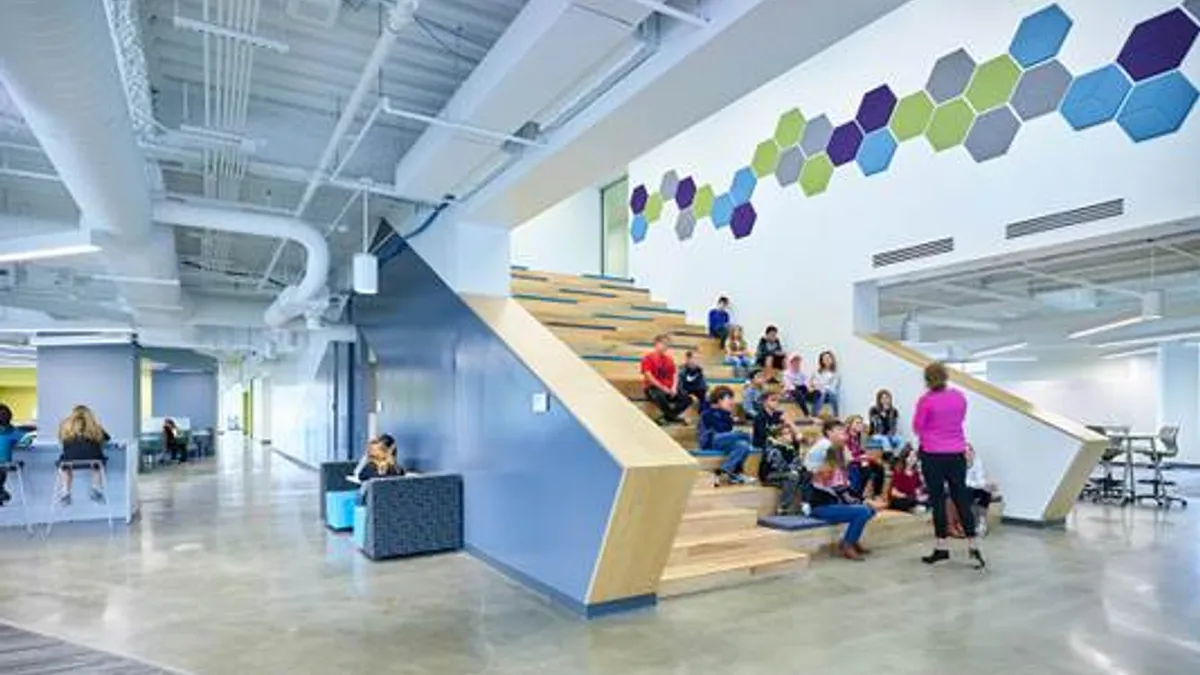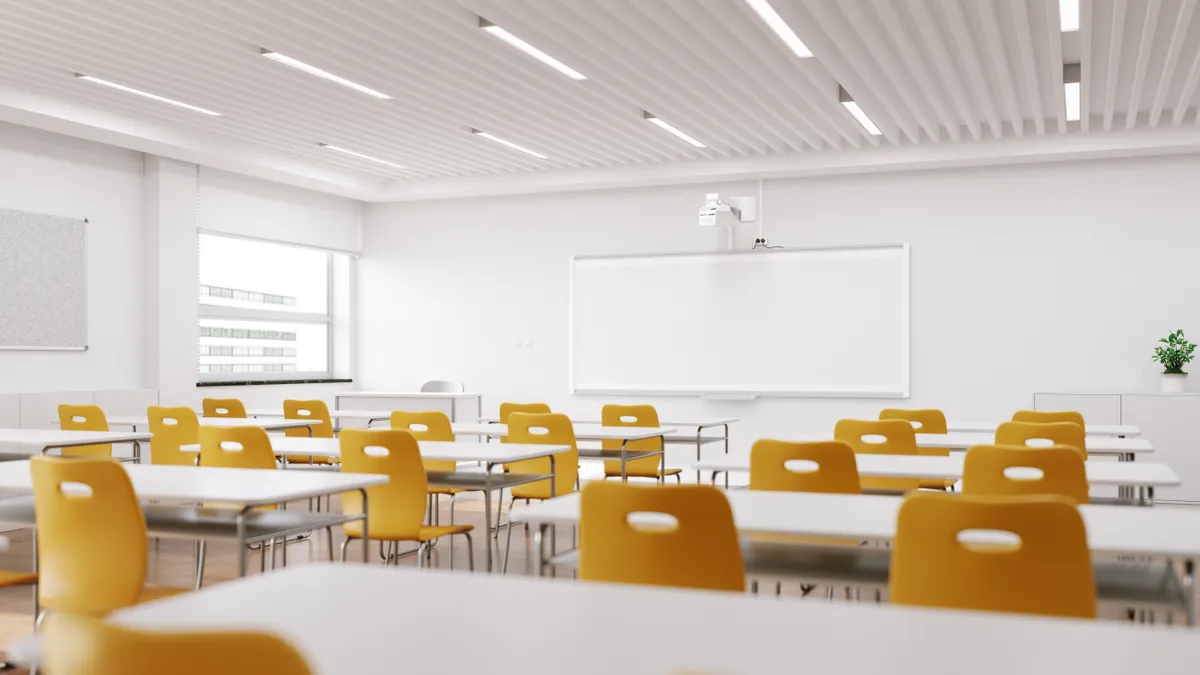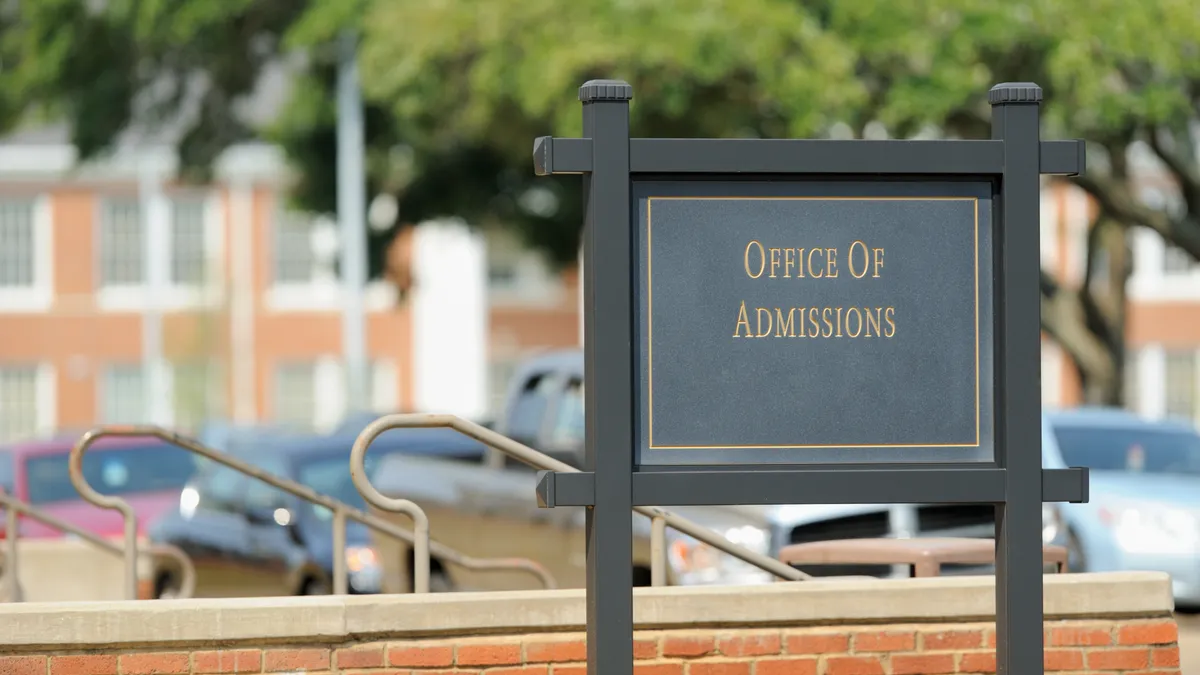When it comes to how higher education leaders can get more students to their institutions, the same advice comes up over and over again — build partnerships with local K-12 districts. A plethora of these types of examples exist in everything from summer camps for high school students to mentorship programs. But, what if your institution could build a far-reaching partnership with hundreds of businesses, several school districts, other universities and the local community at the same time?
That's exactly what Northwest Missouri State University did when partnered with the city of Gladstone, Missouri, and the North Kansas City School District to construct the Northland Innovation Center — a building designed to educate students from the kindergarten to the postsecondary-degree level, with a particular focus on targeting the school-to-college-to-career pipeline through an interactive, project-based learning environment.
Tapping into a national innovation model
The decision to build the center came at an opportune time for all parties involved, said Northwest Missouri State University president John Jasinski in an interview. Gladstone and the North Kansas City Schools District were looking for an opportunity to uplift its SAGE program, which serves academically gifted students from kindergarten to 8th grade.
At the same time, Northwest MSU wanted to expand its offerings to the city of Gladstone. Maximizing economies of scale, the institution and district worked together with the state to construct a building that could serve students across all levels in a unique, experimental learning environment.
But, said Jasinski, while the building was a partnership with the district and the city, it really served as a conduit for the institution to partner with the Northland Caps, a branch of the nationally recognized innovation model known as the CAPS Network — or Center for Advanced Professional Studies — that is in 12 states, according to its website. The program focuses on facilitating profession-based learning, innovative curriculum responsive to workforce needs, real-world professional and experiential learning, skill and entrepreneurship development across the K-21 pipeline.
By participating in this program, said Jasinski, the university accessed larger partnerships across local industry leaders, the other seven surrounding Missouri school districts and the local Metro Community College, among other institutions in the area. All the while, Northwest MSU could strategically use the building for students, while also focusing on workforce needs like digital media and design, engineering, advanced manufacturing and global business.
"Through this we were able to put together a fast-track program with Metro Community College and a concurrent enrollment model where we remove time and costs to degree completion by having that be done at the NIC," said Jasinski. "We also have worked with Northland city schools to pilot and implement a grow your own program which helps their high school students who are interested in pursuing teaching careers. They have a chance to come to the NIC and get college credit and get on a pathway to teaching and working with younger students all in the same building."
"There are other CAPs models out there, but I can attest the Northland model has been very successful and has exploded in popularity, helping more and more student receive college credit and address professional skills outcomes," he added.
Informed by pedagogy and local needs
The Northland Innovation Center is a 95,000-square-foot facility on a five acre-campus in Gladstone completed in August 2017. The partnership's leaders prioritized a pedagogical design approach that would be based on project-based learning and educating students to be ready for a collaborative, technology-entrenched workforce. This occurs as students earn high school and college elective credits while participating in internships with partner businesses.
The decision to build the center, according to Blue Valley Schools Superintendent Todd White, who spearheaded the K-12 aspect of the project when he was superintendent of the North Kansas School District, was made in an effort to meet the needs of the community, as well as create more space for the growing numbers of K-12 students in pre-existing schools.
But, the focus wasn't just on building partnerships to target the pipeline; it was also about creating more engaging and strategic learning environments for advanced pupils. To achieve this end, the building's design had to be deliberate, he said.
"[This] could be a once in a lifetime opportunity so we really had to think ... what are our kids doing now and in 25 ot 30 years," said White. To achieve tha goal, he said he, Jasinski and other partners went into the workforce and observed the needs of industries to inform the building's design and how students could learn in it.
He added they also visited the CAPs program at the Blue Valley School District in Missouri to understand how the facility could create unique opportunities.
Investing in the innovation mindset
In terms of how that goal of coming up with a unique design actually played out, Hosam Habib, lead designer at Hoefer Wysocki, the design partner chosen to construct the building, said there were a lot of strategic discussions. Partners focused on creating a campus where students would want to spend time as college students, while at the same time creating a secure environment for younger students.
The focus, though, was on creating a facility that could "give a glimpse to the younger student about what it's like to go to college," said Habib. "And vice versa — the higher education student, who perhaps wants to be a teacher, can see what it's like to have a school where there's robots ... and can see what their future students may be like,"
Habib said the space was designed to "be shared without any walls, and where there is cross pollination that creates innovation instead of the silos of walled off classrooms." With multiple entrances that could create secure spaces for younger students, but also open arenas and lounges for older students to gather — including a 14-foot-wide hallway with writable walls and touch screens — the building was made to feel unique, but still a traditional and collaborative college setting where students could facilitate the exchange of ideas.
Investing in such an approach is much different than most education-business partnerships. However, Jasinski said these arrangements are not only key to preparing students for an evolved work environment, but also worthwhile to education.
"I'm talking about the whole pipeline; we all have to be interconnected and work together. There's not one specific path that works for everyone," said Jasinski.
"It's important to listen, learn, respond and be agile," he said.






 Dive Awards
Dive Awards
















